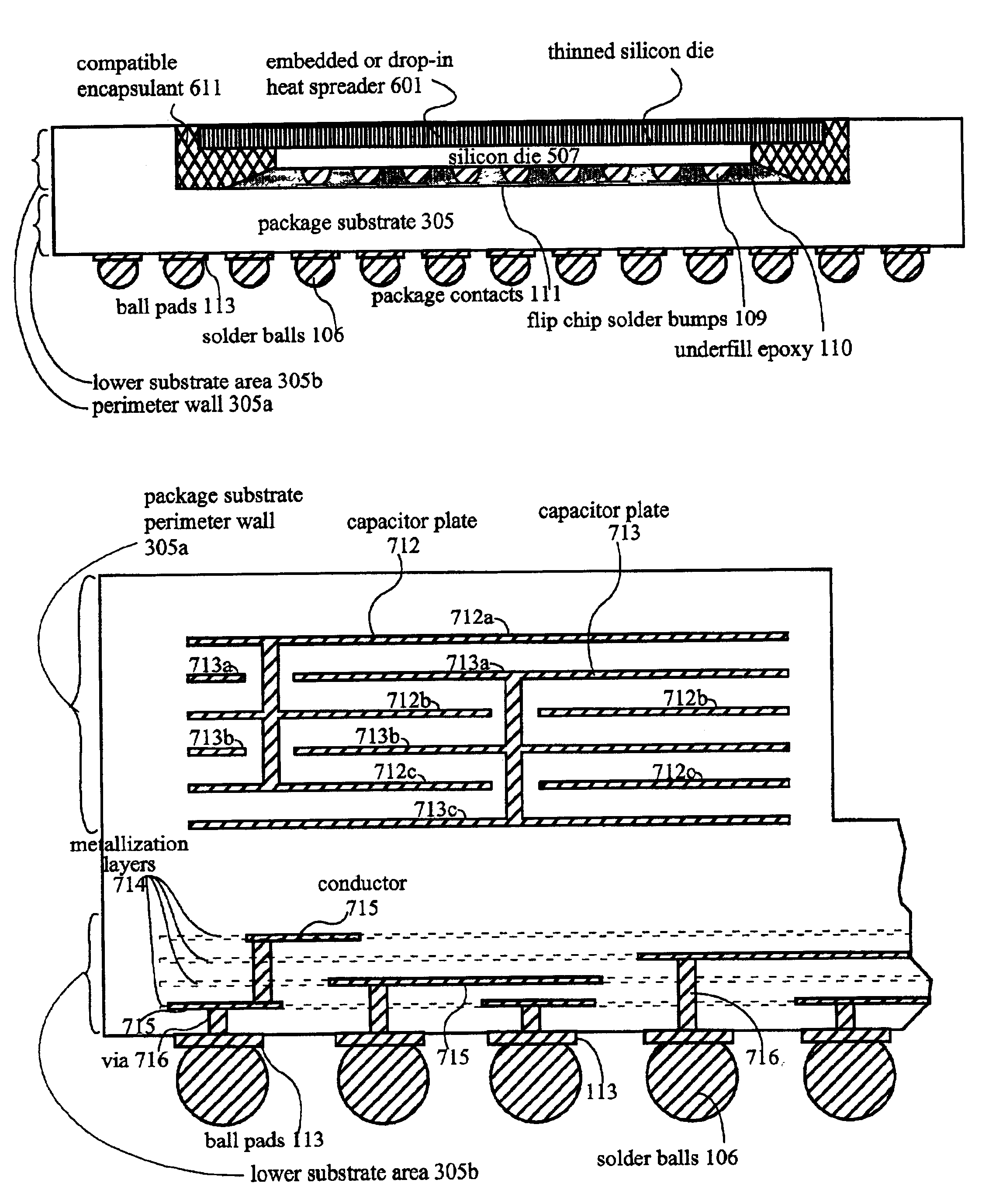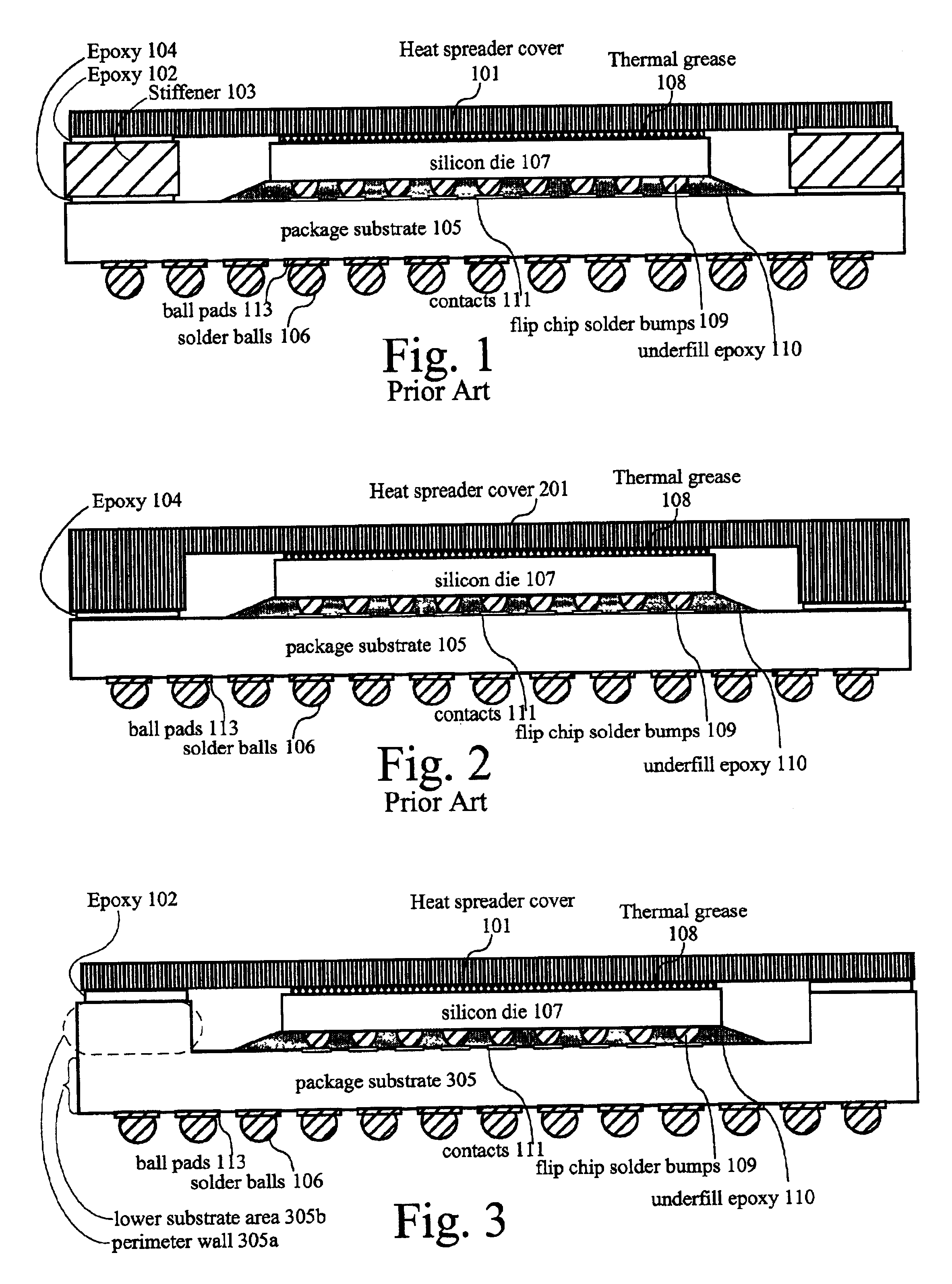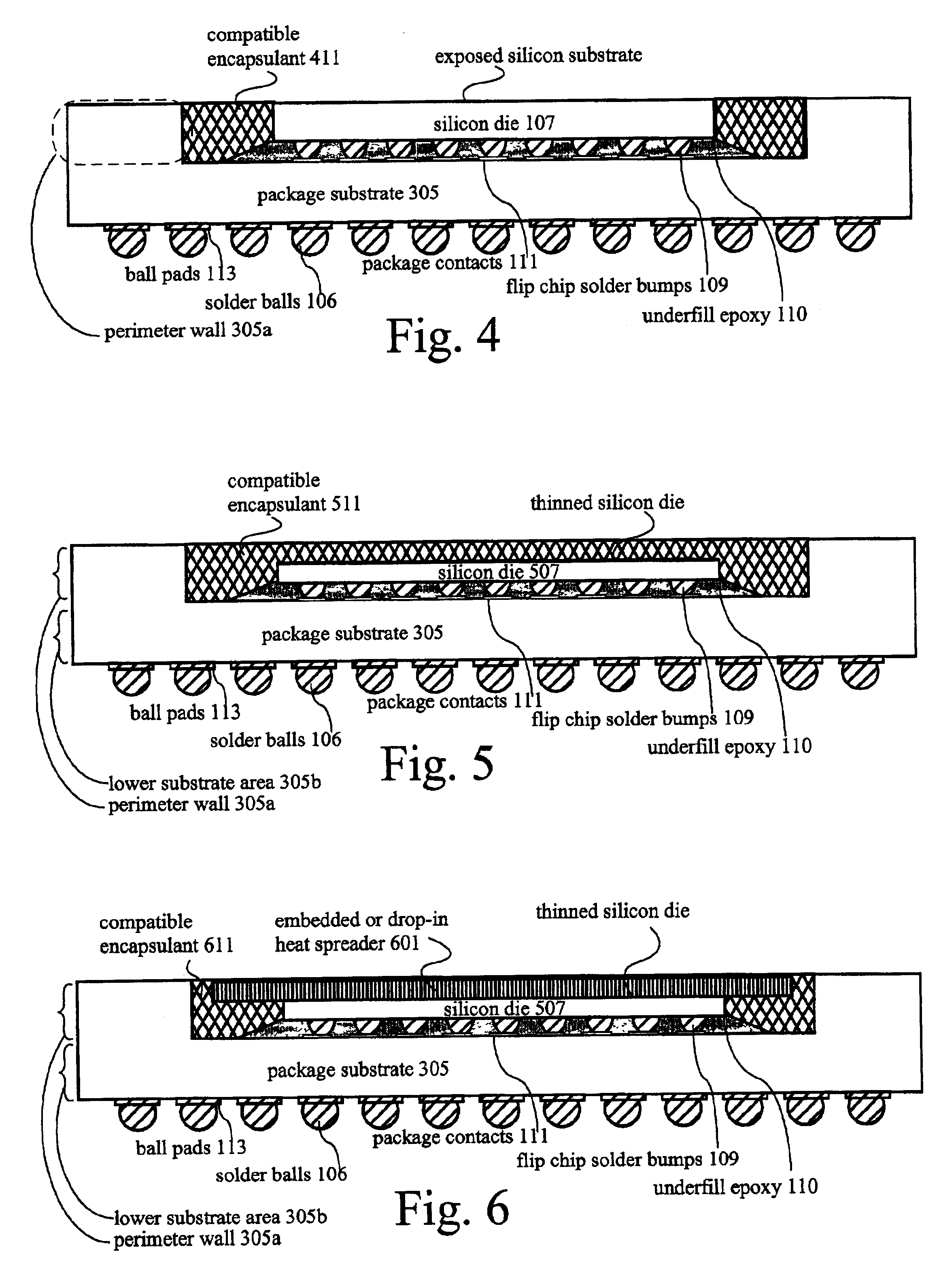High performance flipchip package that incorporates heat removal with minimal thermal mismatch
a flipchip and heat removal technology, applied in the direction of semiconductor devices, electrical equipment, semiconductor/solid-state device details, etc., can solve the problems of lack of planarity and contact issues, difficult manufacturing, and relatively complex structure of some of these schemes, so as to reduce warpage during assembly, minimize interfacial stresses, and enhance the structure used
- Summary
- Abstract
- Description
- Claims
- Application Information
AI Technical Summary
Benefits of technology
Problems solved by technology
Method used
Image
Examples
Embodiment Construction
[0020]FIG. 3 shows one embodiment of the invention in which package 305 comprises a unitary structure having a central recessed region surrounded by perimeter walls 305a. Positioned within the central recessed region is silicon die 107 electrically connected to a plurality of contacts 111 in the central recessed region by solder bumps 109 and held in place by underfill epoxy 110. Unlike the prior art structures of FIGS. 1 and 2, package 305 is not just flat but incorporates the perimeter walls 305a as a single continuous piece with a lower substrate floor region 305b. The structure itself can have similar material characteristics to those used in prior art structures. A material laminate for package 305 may be procured from Kyocera, Japan as the HiTCE integrated circuit substrate with CTE of 12 ppm / ° C. In the package 305, as illustrated, the cavity floor interconnect metal is patterned to define an array of contact pads 111 that correspond to a similar arrangement of bumps 109 on t...
PUM
 Login to View More
Login to View More Abstract
Description
Claims
Application Information
 Login to View More
Login to View More - R&D
- Intellectual Property
- Life Sciences
- Materials
- Tech Scout
- Unparalleled Data Quality
- Higher Quality Content
- 60% Fewer Hallucinations
Browse by: Latest US Patents, China's latest patents, Technical Efficacy Thesaurus, Application Domain, Technology Topic, Popular Technical Reports.
© 2025 PatSnap. All rights reserved.Legal|Privacy policy|Modern Slavery Act Transparency Statement|Sitemap|About US| Contact US: help@patsnap.com



